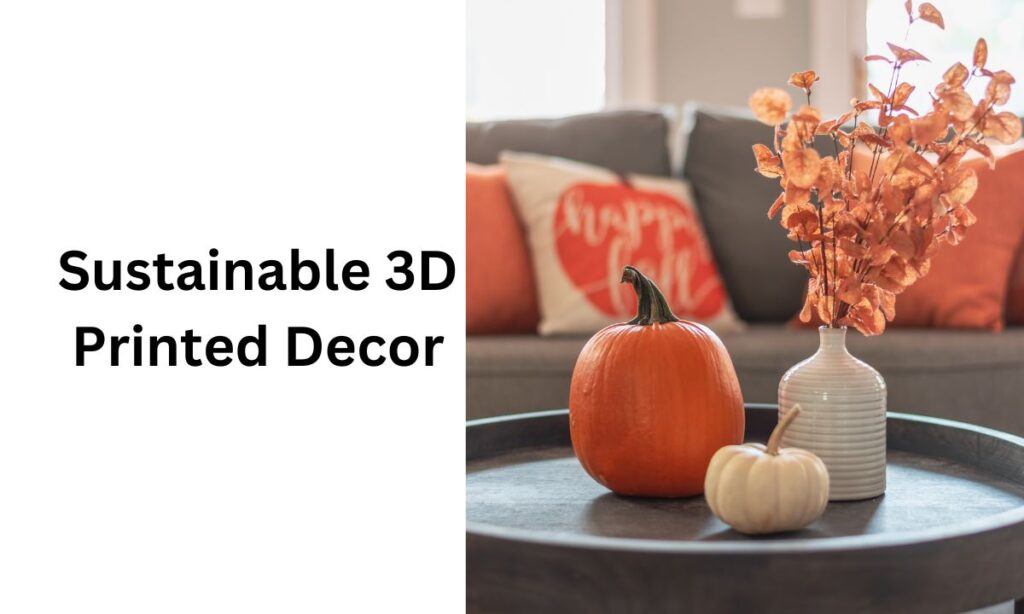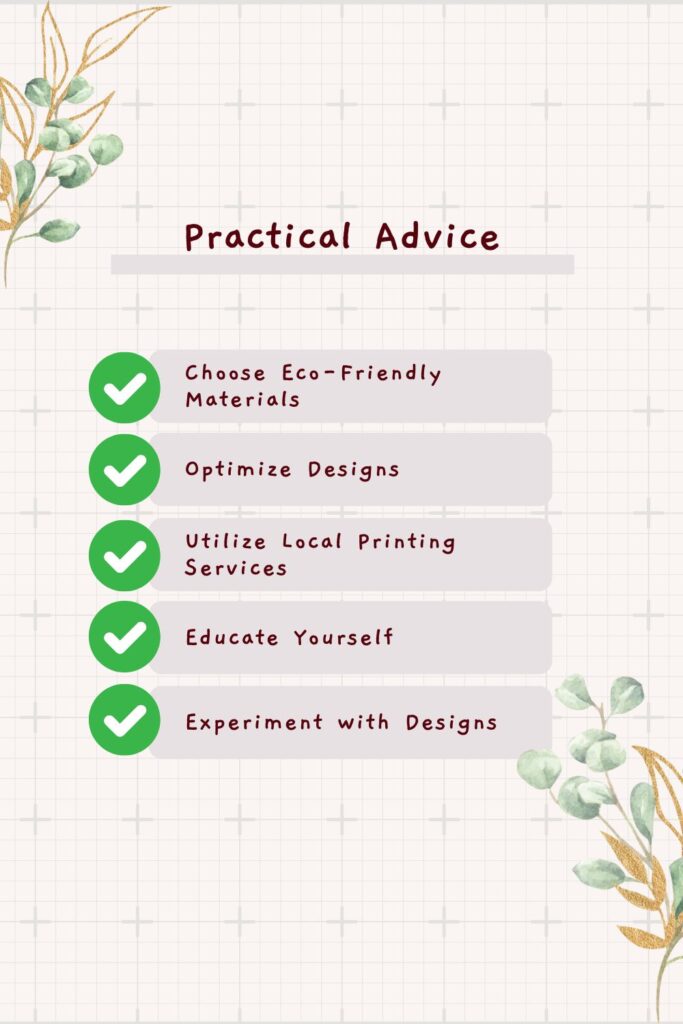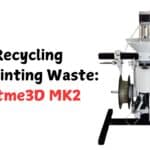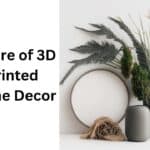
3D printing for sustainable decor reduces your carbon footprint with eco-friendly materials. Embrace this technology with the right knowledge to confidently create beautiful, environmentally conscious home decor.
In a world increasingly concerned about environmental sustainability, many people are searching for ways to make their homes more eco-friendly. One common misconception is that creating decor items- whether through traditional manufacturing or DIY methods – inevitably leads to waste and environmental harm. However, there’s a growing movement that challenges this notion: 3D printing. This innovative technology is not only revolutionizing the way we create home decor but also making it possible to do so sustainably.
Affiliate Disclosure
We participate in Amazon affiliate programs, earning fees from qualifying purchases via links at no extra cost to you. It’s how we keep this blog rolling and my 3D printers buzzing with fresh filament for reviews like this one!
Imagine being able to design and print your own unique decor items while minimizing waste and utilizing eco-friendly materials. Sounds appealing, right? But you might be wondering, “Is 3D printing really as sustainable as it sounds?” It’s a valid concern, especially with the myriad of information available. The good news is that 3D printing can indeed contribute positively to sustainable decor practices, and understanding how it works can help alleviate your worries.
The Power of 3D Printing in Sustainable Decor
Is 3D Printing Truly Sustainable?
Let’s dive into the heart of the matter. Many people worry that 3D printing might not be as environmentally friendly as it seems. Concerns about plastic waste, energy consumption, and the carbon footprint of manufacturing processes are all valid. However, research and advancements in technology show that 3D printing can significantly reduce waste compared to traditional manufacturing methods.
Debunking Myths About 3D Printing
One major myth is that 3D printing primarily uses non-biodegradable plastics that contribute to pollution. While it’s true that some filaments are made from conventional plastics, there are numerous eco-friendly alternatives available today. For instance, materials like PLA (polylactic acid) are derived from renewable resources such as cornstarch or sugarcane and are biodegradable. This means that when you choose the right materials, you can create beautiful decor items without adding to environmental degradation.
How 3D Printing Works
The process of 3D printing involves creating objects layer by layer from a digital model. This additive manufacturing technique contrasts sharply with traditional subtractive manufacturing, which often involves cutting away material from a larger block, resulting in significant waste. Because 3D printing only uses the material necessary for the item being created, it minimizes excess waste and allows for precise production.Furthermore, advancements in technology have led to the development of recycled filaments and bio-based materials designed specifically for 3D printing. These innovations not only reduce reliance on virgin plastics but also promote a circular economy where materials can be reused and repurposed.
Practical Advice: Embracing Sustainable Practices

If you’re considering incorporating 3D printed decor into your home, here are some practical tips:
- Choose Eco-Friendly Materials: Opt for biodegradable or recycled filaments like PLA or PETG when designing your decor items.
- Optimize Designs: When creating your designs, aim for minimal material usage by optimizing shapes and structures to reduce waste.
- Utilize Local Printing Services: If you don’t own a printer, consider using local 3D printing services that prioritize sustainable practices and materials.
- Educate Yourself: Stay informed about new developments in sustainable materials and technologies in the 3D printing industry.
- Experiment with Designs: Use free online resources like Thingiverse or MyMiniFactory to find eco-friendly designs or create your own unique pieces.
Acknowledging Your Concerns
It’s completely understandable to feel hesitant about new technologies like 3D printing, especially when considering their environmental impact. Many people share these concerns, particularly when it comes to sustainability in home decor. Remember, you’re not alone in this journey toward creating a more sustainable living space.
The Benefits of Embracing 3D Printed Decor
- Customization: With 3D printing, you can create personalized decor items that reflect your style and preferences while being environmentally conscious.
- Reduction of Waste: By utilizing precise additive manufacturing techniques, you can significantly reduce material waste compared to traditional methods.
- Sustainable Innovation: As the industry evolves, more companies are developing eco-friendly materials specifically designed for 3D printing.
The Future of Sustainable Decor Through 3D Printing
The future of home decor is being shaped by innovative technologies that prioritize sustainability.
Point 1: Eco-Friendly Filament Development
As awareness grows around environmental issues, manufacturers are increasingly focusing on developing sustainable filaments for 3D printing. For example, companies like Greenfill3D specialize in creating biodegradable and compostable filaments made from renewable resources. By choosing these materials for your projects, you can ensure that your decor items have a minimal environmental impact.
Point 2: Recycling Initiatives
Another exciting development in the realm of sustainable decor is the rise of recycling initiatives within the 3D printing community. Some companies are now producing filaments made from recycled plastics or other post-consumer waste materials. This not only helps reduce plastic waste but also encourages a circular economy where materials are continuously reused rather than discarded.
The Broader Impact of 3D Printing on the Environment
3D printing’s environmental impact extends beyond just sustainable decor. The technology is being hailed as a game-changer in various industries, from healthcare to automotive. However, it’s essential to approach it with a balanced perspective. While 3D printing offers numerous environmental benefits, it’s crucial to be aware of its challenges and work towards mitigating any adverse effects.
Further Information: Exploring Related Topics
As you explore the world of sustainable decor through 3D printing, consider delving into related topics such as:
- The role of community makerspaces in promoting eco-friendly practices.
- How interior designers are incorporating 3D printed elements into their projects.
- The potential for large-scale applications of sustainable materials in architecture and urban design.
Conclusion
In conclusion, the environmental impact of 3D printing on sustainable decor is overwhelmingly positive! By embracing this innovative technology and choosing eco-friendly materials, you can create beautiful home decor items while minimizing your carbon footprint. It’s natural to have concerns about new technologies; however, with proper knowledge and resources at your disposal, you can confidently navigate this exciting frontier.
Remember to consult with professionals if you’re unsure about specific materials or techniques—there’s a wealth of expertise available to support your journey toward a more sustainable home environment. As we move forward into this new era of design and creativity, let’s celebrate the potential of 3D printing as a powerful tool for promoting sustainability in our homes!
Frequently Asked Questions (FAQs)
How does 3D printing reduce waste?
3D printing, being an additive process, builds objects layer by layer, using only the material needed. This contrasts with traditional methods that often involve removing material, leading to waste.
What types of materials are considered eco-friendly for 3D printing?
Eco-friendly materials include PLA (polylactic acid), PETG (polyethylene terephthalate glycol), and recycled filaments made from post-consumer waste.
Can 3D printed decor items be recycled?
Yes, many 3D printed items, especially those made from bioplastics, can be recycled or composted, further enhancing their eco-friendliness.
Can I use my existing printer for eco-friendly projects?
Yes! Many standard desktop printers can accommodate eco-friendly filaments like PLA or PETG without requiring significant modifications.
Are there any safety concerns with using biodegradable filaments?
Most biodegradable filaments are safe to use; however, always ensure proper ventilation when printing and follow manufacturer guidelines for specific materials.
Relevant Resources:
- Yale’s Journal on 3D Printing and the Environment
- Exploration of 3D Printing for Sustainable Fashion
- Sustainable 3D Printing Research













